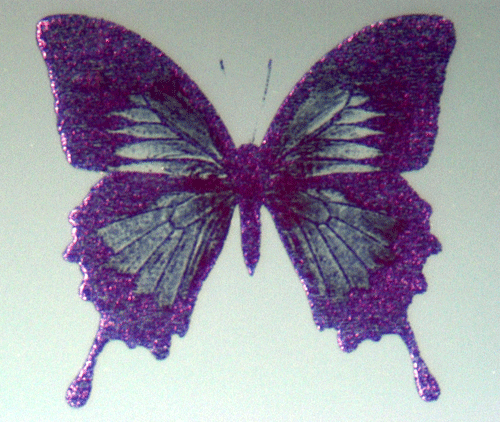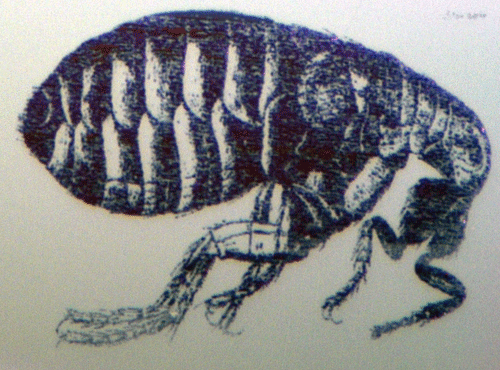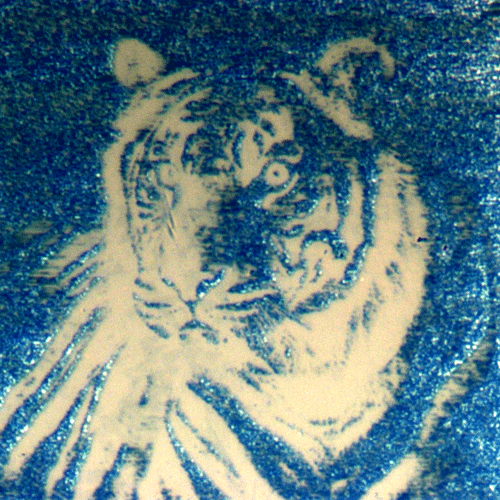‘Nanopixel’ Display Shows Promise in Lab
Image captured from a nanopixel display SPRINGFIELD, VA.—For people in the television industry accustomed as thinking of 4K as the likely future of displays and such exotic technologies as 8K displays as being off in the dreamy future, there’s something even higher resolution in the laboratory. Much higher.

A research team in the United Kingdom has worked up a process that could possibly create a display that’s 150 times the resolution of current 1080p displays. Using a standard 16:9 aspect ratio, that would be (gulp!) a screen that has 288,000 x 162,000 pixels. No one is saying that a monitor with such specs will be for sale anytime soon. However, scientists on the team doing the research are excited enough about the possibilities to apply for a patent.
The technology, referred to as “nanopixels,” is being developed by a team at the University of Exeter that includes Harish Bhaskaran of Oxford University’s department of materials. In the lab, Bhaskaran and his team have shown that nanopixel technology can be used to create extremely thin and flexible displays that could have the resolution necessary to make lines as fine as 300 nanometers.
“We didn’t set out to invent a new kind of display,” Bhaskaran said. “We were exploring the relationship between the electrical and optical properties of phase change materials.”

Image captured from a nanopixel display The scientists found that by layering a 7 nanometer thick coating of a phase-change material called “GST” between two elements of a transparent electrode, they could use an electrical current to draw images on the semiconductor material. GST is the alloy Ge2Sb2Te5 (Germanium-Antimony-Tellurium), layered between electrodes fabricated from indium tin oxide (ITO).
These pixels can be electrically controlled as needed, and can be used to create the RGB elements that form an extremely high-resolution display technology.
Bhaskaran and the team published a report of their work in a recent issue of the scientific journal, Nature.
The professional video industry's #1 source for news, trends and product and tech information. Sign up below.
The layers of the GST film are created using a sputtering technique, where atoms from the target are deposited onto another material as the target is bombarded with high-energy particles. Once the assembly is complete and connected to external control electronics using atomic force microscopy probes, the team set about testing the limits of the display system it had created.
“We managed to create images by switching pixels using an [atomic force microscopy] tip effectively on these sheets,” Bhaskaran said. “We made images of the Radcliffe Camera on these sheets.”
For the uninitiated, the Radcliffe Camera is a research building on the campus of Oxford University.
In addition, the team imaged a variety of items on the nanopixel display, then captured the images as still photos. The three photos accompanying this article were captured in this way.
Bhaskaran said that no other commercially available display technology uses anything like the nanopixel GST technique that is in his lab. However, there are products currently available that are similar in some respects, pointing out that the process uses materials well known in DVDs and in emerging phase-change memories.
This material is still in the lab, so it’s a long way from being on the shelf at the nearby Best Buy store. However, Bhaskaran has some ideas as to how such technology may roll out.
“We envision that initially it will be used for displays that require ultra-high resolution such as smart glasses or holographic displays,” he said.
Coming up with increasingly smaller pixels is one thing, but controlling them is part of the display puzzle. Somehow, each pixel needs to receive discrete instructions as to when to turn on and off, and this usually means lots of connections and powerful control processors. Raise the resolution of the display by a couple orders of magnitude and you’ve now stepped into a new realm for commercial products.

Image captured from a nanopixel display Still, Bhaskaran and the team are pressing forward with their plan to make nanopixels a commercial technology.
“We are working on a prototype with some seed funding to commercialize this technology,” he said. “As part of this, we are building a prototype that will address [the control issues]. Although unique, we do not believe that this would be a bottleneck for this technology.”
Peiman Hosseini of Oxford University’s department of materials is the primary author of the paper in Nature. He pointed out that controlling the pixels might not be as complicated as it seems, due to the nature of the GST material.
“One of the advantages of our design is that, unlike most conventional LCD screens, there would be no need to constantly refresh all pixels, you would only have to refresh those pixels that actually change,” he said in an Oxford University press release. “This means that any display based on this technology would have extremely low energy consumption.”
So is this a real breakthrough or just the sort of thing that researchers stumble across from time to time that never quite make it out of the lab?
“Along with many other researchers around the world, we have been looking into the use of these GST materials for memory applications for many years, but no one before thought of combining their electrical and optical functionality to provide entirely new kinds of non-volatile, high-resolution, electronic color displays,” said David Wright, a professor at the department of engineering at the University of Exeter and co-author of the paper in Nature. “So our work is a real breakthrough.”
Like any technology, the final proof of its viability will be seen once it reaches the commercial stage. Still, if you were thinking “4K and no more,” you should be aware that technology will not stand still―or even take a breather―just because we have to work hard to keep up.
Bob Kovacs is the former Technology Editor for TV Tech and editor of Government Video. He is a long-time video engineer and writer, who now works as a video producer for a government agency. In 2020, Kovacs won several awards as the editor and co-producer of the short film "Rendezvous."

